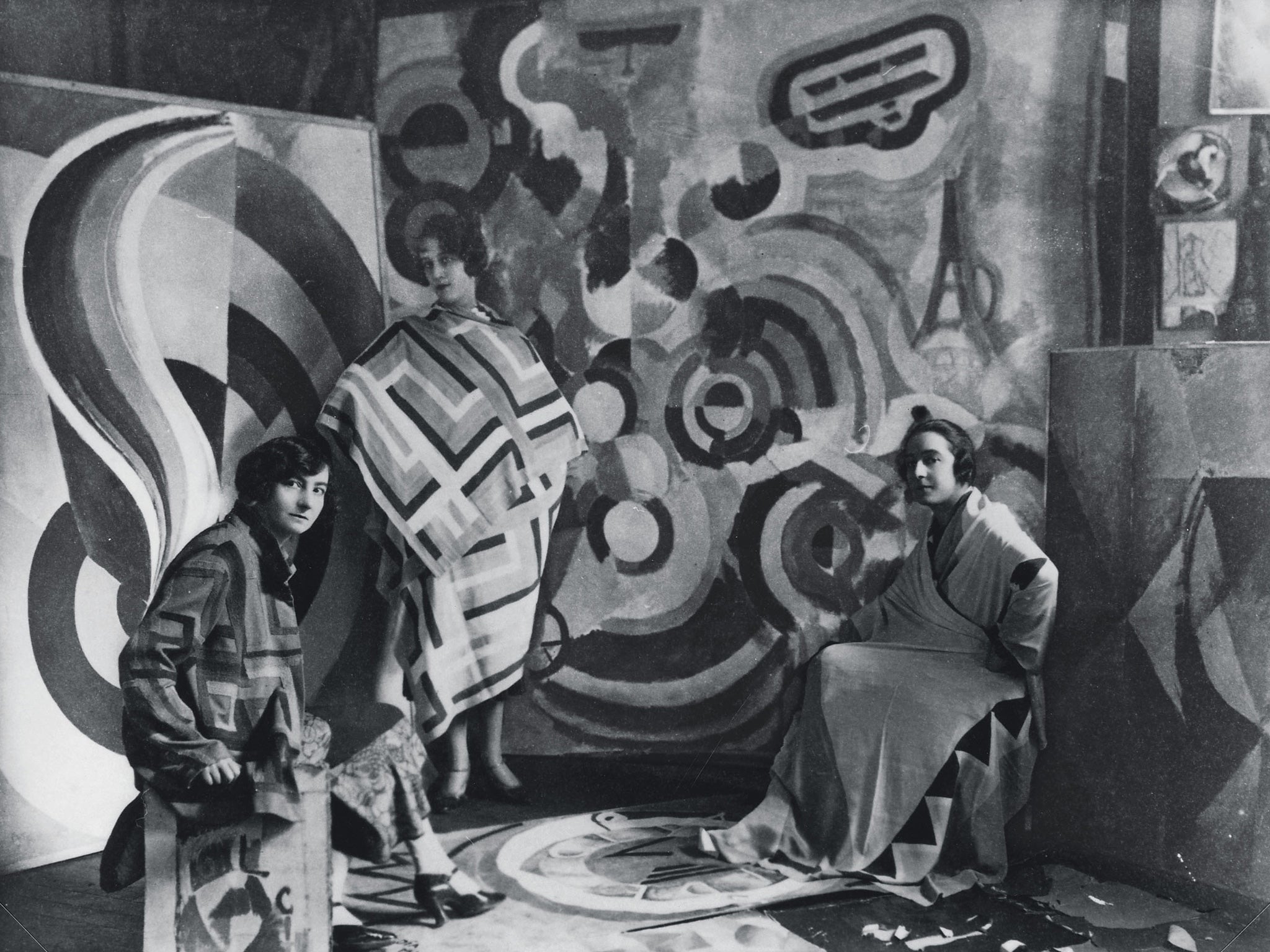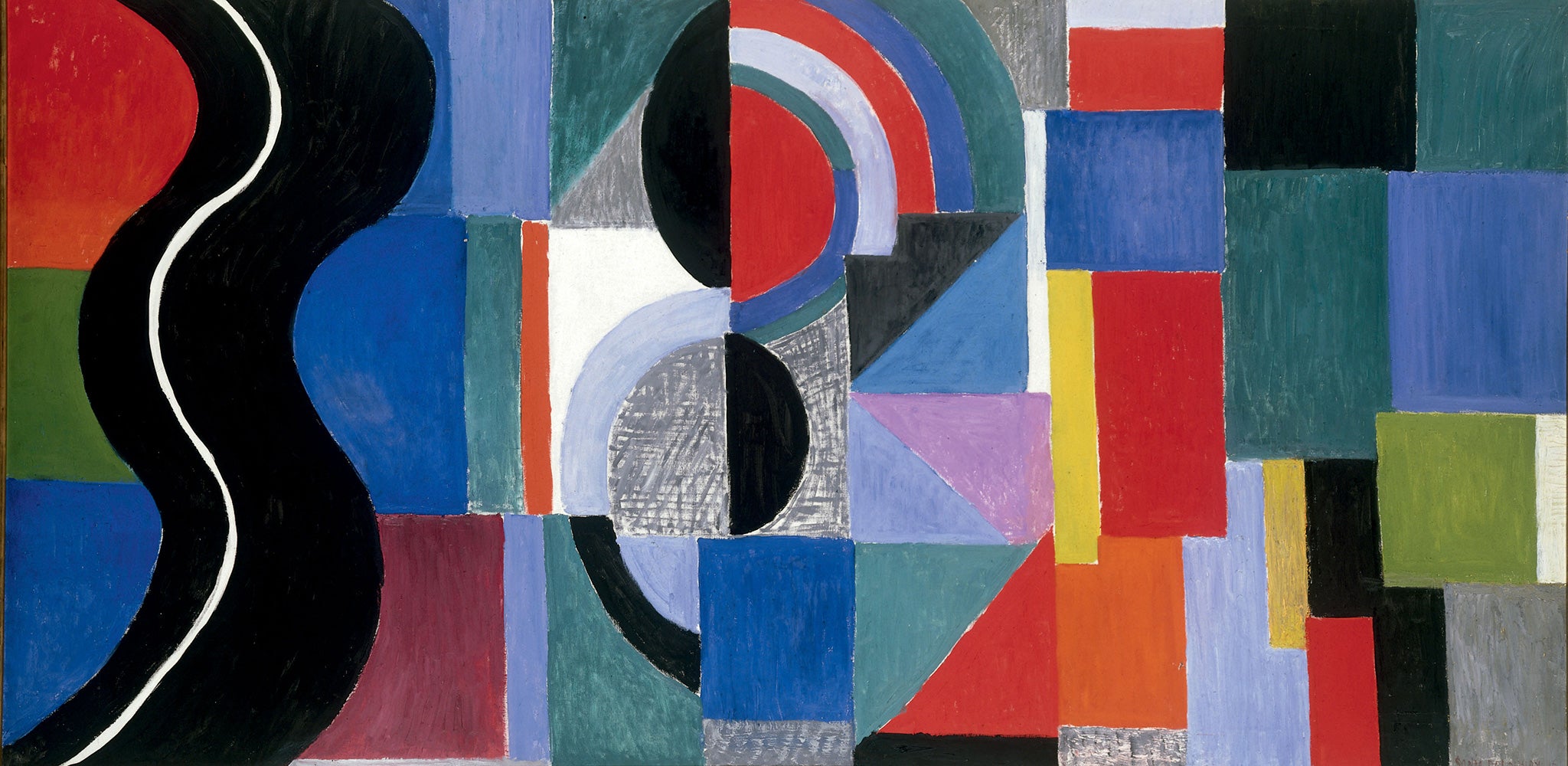The EY Exhibition: Sonia Delaunay, Tate Modern, review: Blockbuster puts a pioneer back in the picture
The gallery is finally recognising women's role in contemporary art

Your support helps us to tell the story
From reproductive rights to climate change to Big Tech, The Independent is on the ground when the story is developing. Whether it's investigating the financials of Elon Musk's pro-Trump PAC or producing our latest documentary, 'The A Word', which shines a light on the American women fighting for reproductive rights, we know how important it is to parse out the facts from the messaging.
At such a critical moment in US history, we need reporters on the ground. Your donation allows us to keep sending journalists to speak to both sides of the story.
The Independent is trusted by Americans across the entire political spectrum. And unlike many other quality news outlets, we choose not to lock Americans out of our reporting and analysis with paywalls. We believe quality journalism should be available to everyone, paid for by those who can afford it.
Your support makes all the difference.Sonia Delaunay’s is the most recent one-woman show to occupy the capacious Tate Modern. Does she deserve it? Absolutely. The painter and designer was married to the notable abstract painter Robert Delaunay, but this carefully curated chronological show elevates her to her rightful position as a major artist in her own right.
The youngest of three children, Delaunay was born in Odessa, Russia, in 1885, into a Jewish family. She arrived in Paris in 1906 after studying painting in Germany for two years. Early paintings such as Finnish Woman (1907) clearly show the influence of both her German sojourn and the salons of Paris. We see Henri Matisse and his richly patterned backgrounds crossed with the pared-down, heightened colours of the Blaue Reiter group. Delaunay met Wilhelm Uhde, a German art critic and dealer, whom she married and soon after divorced. Between 1909 and 1914, Delaunay met and married Robert, gave birth to a child, and established a lavishly decorated home with her fabrics and patterns.
Her interest in fabrics and sewing was formed in Russia. A patchwork cradle cover composed of her recognisable abstracted shapes and made for her son’s birth in 1911 illustrates the combination of skills and ideas that propelled her through the next decade. She increasingly turned her attention to design, creating striking patterns that drew on her ideas of abstraction.

The financial crash of 1929 forced her to close her atelier. At this point, she once again focused on painting. Robert’s premature death soon after in 1941 led to her moving in with her friends Hans and Sophie Taeuber-Arp in the south of France for a period. She never stopped working though, and returned to Paris in 1945, where she painted non-stop until her death, aged 94, in 1979.
A late painting, Syncopated Rhythm (1967), contains all the elements that make her work recognisable; it is a patchwork quilt of ideas. A sinuous, snake-like black form on the left-hand side of the canvas, energised by a winding white line, looks like a mysterious vertical road. In the centre are interlocking discs bisected in colour – here in murkier tones – and on the right are interlocking blocks of colour. It is a wonderful example of pure painting, a weaving of forms with a rhythm of light that sweeps you up into the content as any landscape or narrative painting might.
It is such a shame that the Modernist dogma could only accept this artist when she stopped testing the borders of what was then considered acceptable as art. Unwilling to accept that the discourse of Modernism could be taken in all ways – into clothing, décor, even into cot covers for babies.
This is a great moment for Tate Modern. The third floor is celebrating a living painter, Marlene Dumas, too – showing that women are finally being recognised as essential to the story of contemporary art.
To 9 August (020 7887 8888)
Join our commenting forum
Join thought-provoking conversations, follow other Independent readers and see their replies
Comments